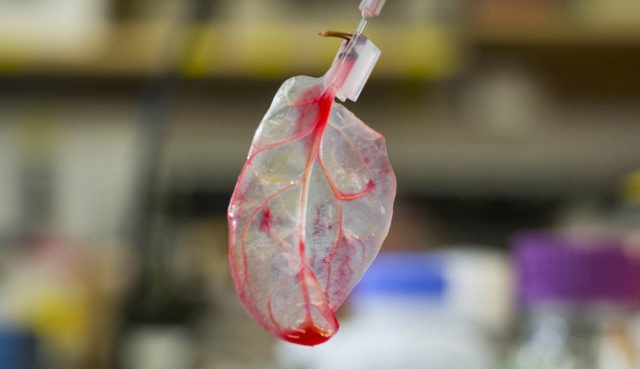
Innovations like 3-D printing have enabled scientists to make significant progress in manufacturing various bioengineered organs and tissues. However, the one organ that has been hard to replicate is the human heart. That’s because current technology is unable to create the network of tiny blood vessels that transport oxygen inside a tissue as dense as the human heart muscle.
Glen Claudette, a Professor of Biomedical Engineering at the Worcester Polytechnic Institute (WPI) in Worcester, Massachusetts, was pondering over this issue with graduate student Joshua Gershlak when they came up with a brilliant idea. Instead of trying to re-create the tiny veins, why not take advantage of the similar network present in leaves to deliver water and nutrients to plant cells?

The researchers first stripped store-bought spinach leaves of their green material by circulating a detergent solution through the veins. With the plant cells removed, all that remained were intact leaf veins and the cellulose structure which holds the leaf together. Cellulose is compatible with human tissue and already used in many regenerative medical applications, such as cartilage and bone tissue engineering, as well as wound healing.
The translucent leaves were infused with live human cardiac cells, allowing tissue to grow around the natural plant scaffolding. Within five days, the leaves had transformed into beating “hearts.” The researchers then introduced red dye and microbeads, the same size as red blood cells, into the plant veins. Sure enough, they moved flawlessly through the branched network, similar to how blood flows in human hearts.

The scientists, who published the results of the initial study in the journal Biomaterials in May, next hope to grow layers of these healthy heart muscles, which they believe could some day be used to treat patients with heart issues. Claudette says, “We have a lot more work to do, but so far this is very promising. Adapting abundant plants that farmers have been cultivating for thousands of years for use in tissue engineering could solve a host of problems limiting the field."
Resources: nationalgeographic.com,washingtonpost.com, livescience.com